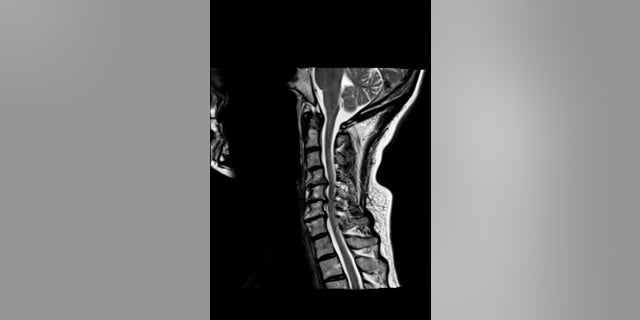
NY mother: New York did not prioritize children during COVID-19 pandemic
New York State Senate candidate and mother Danyela Souza Egorov discusses the negative impacts of masking children.
New research and technology suggest hope for those suffering from paralysis.
Researchers rapidly restored motor function in three men with complete paralysis using an epidural electrical stimulation system, according to a new study published in Nature Medicine.
“Thanks to this technology, we have been able to target individuals with the most serious spinal cord injury, meaning those with clinically complete spinal cord injury, with no sensation and no movement in the legs,” said lead author Dr. Grégoire Courtine, professor of neuroscience and neurotechnology at the Swiss Federal Institute of Technology, University Hospital Lausanne and the University of Lausanne.
Even though there is no connection between the brain and the extremities after spinal cord injuries, past research has discovered that some patients with even a “complete” injury may have some connections that still function, according to Medscape.
Although recent 2018 studies using stimulators to treat chronic pain in spinal cord patients have shown promise, the technology is too narrow in scope to target all regions of the spinal cord involving the control of leg and trunk movements, the report added.

A cross-section of a 3-D printed adult human femur (image courtesy Northwestern University)
Ordinarily in patients without spinal cord injury, nerves in the spinal cord use signals to communicate with the brain to move the legs, but after a spinal cord injury, the nerve signals are too weak to create movement, according to a BBC report.
The report noted the study inserted a paddle-shaped device that is embedded with electrodes to boost the nerve signals to allow a patient to walk, with wires from these electrodes also connected to a neurostimulator that is implanted underneath the skin in the abdomen, according to the paper.
Three men participated in the study, ranging from ages 29 to 41, who all suffered a spinal cord injury due to motorcycle collisions several years prior to entering the study so that the researchers knew their injuries were stabilized, according to Medscape.
The news outlet also noted the participants then used a tablet that communicated with the implanted device to select which activity they wanted to perform, such as walking or standing.
But Dr. Peter J. Grahn, assistant professor, Department of Physical Medicine and Rehabilitation and Department of Neurologic Surgery, Mayo Clinic who authored one of the 2018 studies on pain using stimulators, told Medscape although this study’s technology “is a huge step forward,” he questioned the study’s definition of walking.

The author’s cervical spine before surgery showing spinal cord compression in three areas.
( )
“They say independent stepping or walking is restored on day one, but the graphs show day one function is having over 60% of their body weight supported when they’re taking these steps,” Grahn said.
All three men were able to take up to 300 independent steps, but with body support, within days of starting the spinal stimulation, according to the paper.
One of the participants, Michel Roccati, who was paralyzed after a motorbike accident without any feeling in his legs, said, “I stand up, walk where I want to, I can walk the stairs – it’s almost a normal life.”

Professional senior physiotherapist doing manual treatment to a men’s thoracic spine.
After receiving the spinal implant in August 2020, he could walk with body support within one day of the stimulation, which was 11 days after the procedure, according to STAT.
“I see the improvement every day,” he added.
Eellan Sivanesan, director of neuromodulation in the Division of Pain Medicine at Johns Hopkins School of Medicine, told STAT because it’s a more invasive procedure to implant the paddle devise than the typical spinal cord stimulation device, which require surgeons to implant only through a needle, it may “limit the number of physicians readily able to apply the treatment.”
Also, because at least six cm of healthy spinal cord under the lesion of injury is necessary to implant the electrodes, not all paralyzed patients are eligible for the procedure, according to Medscape.
“There’s a huge variability of spinal cord anatomy between individuals. That’s why it’s important to study each person individually and to have individual models in order to be precise,” said co-author and neurosurgeon Dr. Joceylyne Bloch, associate professor, University of Lausanne and University Hospital Lausanne.
Courtine also cautions the study’s technology is not a cure for patients with spinal cord injury because that will require regeneration of the spinal cord, which current stem cell research is trying to address, but is only in the early stages, according to the BBC.
GET THE FOX NEWS APP HERE
“This is not a cure for spinal cord injury. But it is a critical step to improve people’s quality of life. We are going to empower people. We are going to give them the ability to stand, to take some steps. It is not enough, but it is a significant improvement,” Courtine said.
Source: Read Full Article